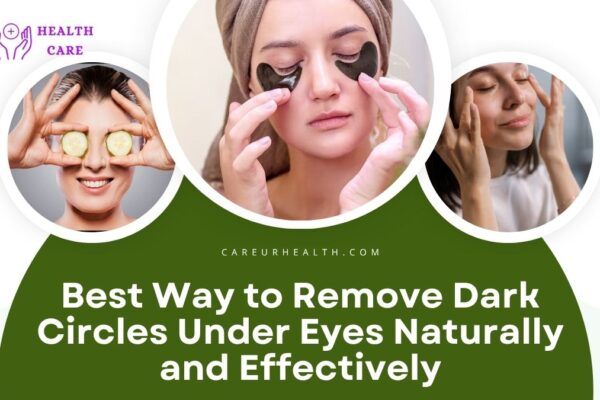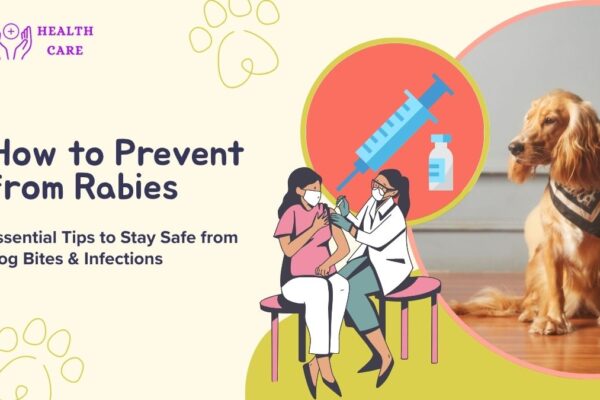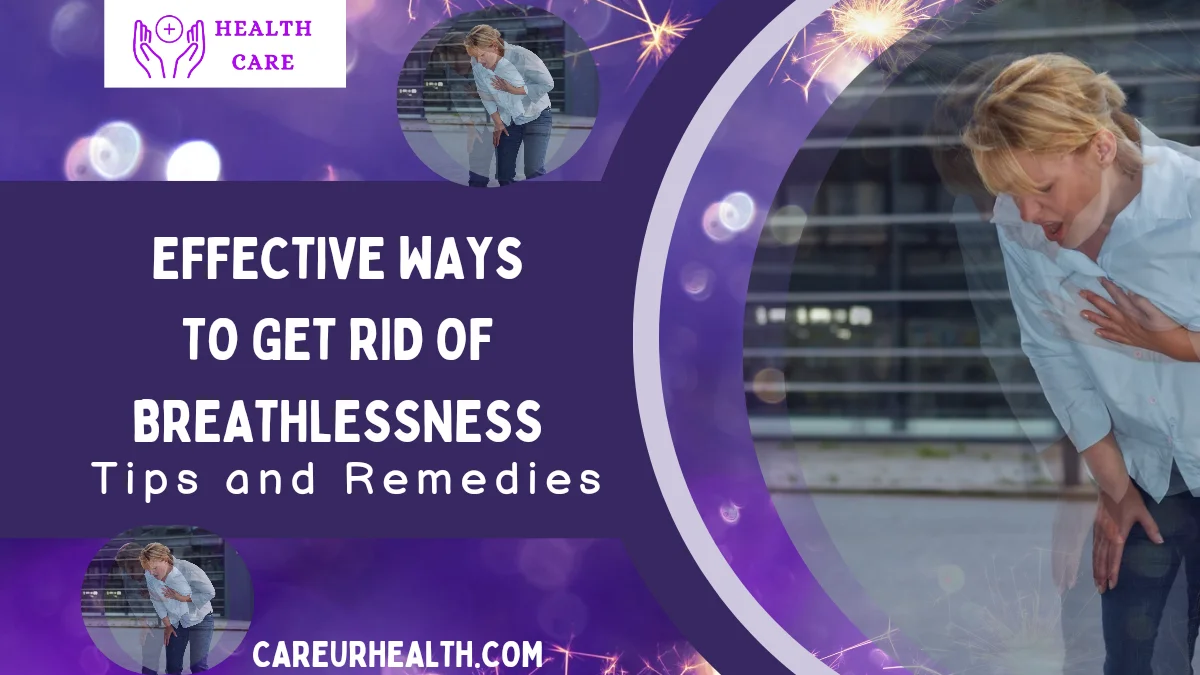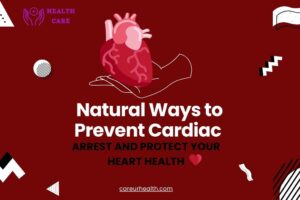Learning how to get rid of breathlessness can significantly improve your overall health and comfort. Breathlessness can be caused by a variety of factors, ranging from physical exertion to underlying health conditions.
Regardless of the cause, it’s important to address it promptly. Here are some helpful tips and remedies to alleviate breathlessness and improve overall lung function. There are various ways to get rid of breathlessness without the need for medication. If you are wondering how to get rid of breathlessness, deep breathing exercises may offer relief.
Key Takeaways
- Proper breathing techniques can reduce the frequency of breathlessness.
- Regular physical exercise can help strengthen your lungs.
- Staying hydrated improves oxygen delivery to tissues and reduces strain on the body.
- Maintaining a healthy diet can support lung health and overall energy levels.
- Medication may be necessary for individuals with underlying conditions causing breathlessness.
Breathing Techniques to Reduce Breathlessness
Breathing exercises are one of the most effective ways to combat breathlessness. Techniques such as diaphragmatic breathing and pursed-lip breathing can be very beneficial in managing shortness of breath. Learning how to get rid of breathlessness can significantly improve your overall health and comfort.
“By focusing on controlled breathing, you can calm your body and restore your normal breathing pattern.”
Diaphragmatic breathing, also known as belly breathing, encourages the use of the diaphragm rather than the chest, which allows for deep breaths and more efficient air intake. There are various ways to get rid of breathlessness without the need for medication.
- Practice deep breathing slowly to relax the body.
- Use pursed-lip breathing to extend each exhale.
- Focus on your inhale and exhale rhythm to relax.
- Inhale through your nose for a steady breath.
- Exhale slowly through pursed lips to release excess air.
Exercise and Physical Activity for Lung Strength
Regular physical activity is essential for maintaining lung health. Engaging in exercises like walking, jogging, swimming, or cycling can strengthen your lungs and improve your cardiovascular function. If you are wondering how to get rid of breathlessness, deep breathing exercises may offer relief.
It’s important to start slow and gradually increase the intensity as your body adjusts. These exercises promote efficient oxygen delivery and can help alleviate breathlessness over time. There are various ways to get rid of breathlessness without the need for medication.
- Start with low-intensity exercises to build endurance.
- Gradually increase your physical activity level to avoid overexertion.
- Include breathing exercises in your workout routine.
- Stretch regularly to improve flexibility in the chest.
- Focus on relaxed breathing during and after exercise.
Diet and Hydration: Key to Preventing Breathlessness
A balanced diet is crucial for overall health and can also help prevent breathlessness. Foods rich in antioxidants, vitamins, and minerals support lung function and reduce inflammation. If you are wondering how to get rid of breathlessness, deep breathing exercises may offer relief.
Hydration plays an essential role in maintaining proper airway function, so be sure to drink plenty of water throughout the day. There are various ways to get rid of breathlessness without the need for medication.
Dehydration can make breathing more difficult and put extra stress on your lungs. Including anti-inflammatory foods such as turmeric and ginger in your diet can also improve lung health.
- Drink water regularly to keep the airways hydrated.
- Consume fruits and vegetables rich in vitamins to boost immune health.
- Limit processed foods that can cause inflammation.
- Avoid caffeine and alcohol as they can dehydrate your body.
- Focus on whole grains and lean proteins for sustained energy.
Medications and Medical Interventions
In some cases, breathlessness may be a result of underlying health conditions like asthma, COPD, or heart disease. Learning how to get rid of breathlessness can significantly improve your overall health and comfort.
Medication prescribed by a healthcare provider can help manage symptoms and improve lung function. Bronchodilators, inhalers, and steroids are commonly prescribed for those with chronic respiratory conditions. If you are wondering how to get rid of breathlessness, deep breathing exercises may offer relief.
For individuals experiencing breathlessness due to anxiety, anti-anxiety medications or therapies may also be helpful.
- Consult a doctor to find the underlying cause of breathlessness.
- Follow your prescribed treatment plan consistently.
- Use inhalers or nebulizers for immediate relief of symptoms.
- Adjust your lifestyle to complement any medical treatments.
- Get regular check-ups to monitor your lung health.
Lifestyle Changes for Long-Term Relief
Incorporating lifestyle changes can greatly improve long-term respiratory health.
Quitting smoking, reducing exposure to air pollutants, and maintaining a healthy weight can all contribute to reducing the frequency of breathlessness episodes.
Smoking is a leading cause of chronic obstructive pulmonary disease (COPD) and other respiratory issues, so giving up smoking is the most important change to make.
- Stop smoking to significantly reduce lung damage.
- Minimize exposure to air pollution and allergens.
- Maintain a healthy weight to avoid excessive strain on your lungs.
- Avoid secondhand smoke and strong chemical odors.
- Consider air purifiers for your home to improve indoor air quality.
Understanding the Root Causes of Breathlessness
Breathlessness is often a symptom of an underlying condition rather than a standalone issue. It can be triggered by several factors such as physical exertion, anxiety, or chronic respiratory diseases like asthma or COPD. If you are wondering how to get rid of breathlessness, deep breathing exercises may offer relief.
Understanding the root cause of breathlessness is crucial for effective treatment and management. If it occurs suddenly or frequently, it may indicate a medical condition that requires attention.
For individuals who are generally healthy, breathlessness may result from overexertion, but for those with respiratory or cardiovascular issues, it could be a warning sign that demands further investigation.
- Assess the frequency and severity of breathlessness.
- Look out for other symptoms like chest pain or dizziness.
- Understand whether physical activity triggers breathlessness.
- Consult a healthcare provider for testing if symptoms worsen.
- Keep track of your breathing patterns to identify triggers.
Breathing Exercises to Combat Breathlessness
When experiencing breathlessness, it’s essential to focus on calming and controlled breathing. Certain breathing techniques can significantly reduce the sensation of breathlessness by allowing the lungs to expand more efficiently. Learning how to get rid of breathlessness can significantly improve your overall health and comfort.
Pursed-lip breathing, for example, is an effective technique where you breathe in through your nose and slowly exhale through pursed lips. This helps slow down the breathing process, making it easier for your body to oxygenate the blood. Knowing how to get rid of breathlessness during exercise can help you perform better.
Additionally, diaphragmatic breathing—breathing with your diaphragm rather than shallow chest breathing—promotes deep, more effective breaths that can ease shortness of breath. There are various ways to get rid of breathlessness without the need for medication.
- Practice pursed-lip breathing for slow exhalation.
- Inhale through your nose and exhale through pursed lips to calm the lungs.
- Focus on deep, slow breaths to relax the body.
- Use diaphragmatic breathing for a more efficient oxygen intake.
- Repeat these exercises multiple times throughout the day to reduce stress.
The Role of Physical Activity in Managing Breathlessness
Staying physically active plays a vital role in maintaining lung health and improving stamina. Regular physical activity helps strengthen the diaphragm and improves lung capacity. Knowing how to get rid of breathlessness during exercise can help you perform better.
Cardiovascular exercises such as walking, cycling, or swimming boost heart and lung function, which can reduce the frequency and severity of breathlessness. If you are wondering how to get rid of breathlessness, deep breathing exercises may offer relief.
Breathlessness can be caused by various factors, ranging from temporary conditions like physical exertion or stress to more serious underlying health issues. One way to get rid of breathlessness is by practicing yoga and mindful breathing exercises.
It is important to understand that while occasional breathlessness may not be alarming, frequent or severe episodes require attention.
One of the most effective ways to manage breathlessness is through breathing exercises, such as pursed-lip breathing and diaphragmatic breathing. These exercises help regulate your breath, reduce anxiety, and improve lung capacity.
However, if you are new to exercise or have an underlying health condition, it’s important to start slow. Low-intensity activities can gradually build endurance without overexerting your body.
As you get stronger, your body will be able to handle higher intensities and more demanding exercises with less risk of breathlessness. There are various ways to get rid of breathlessness without the need for medication.
- Start with low-impact exercise like walking or swimming.
- Gradually increase intensity to build endurance over time.
- Include stretching exercises to improve lung flexibility.
- Incorporate breathing exercises into your workout routine.
- Always listen to your body and avoid pushing yourself too hard.
Natural Remedies for Breathlessness Relief
There are several natural remedies that can help alleviate breathlessness and improve respiratory health. Herbal teas made from ingredients like ginger, garlic, and peppermint have been shown to help open up the airways and reduce inflammation. Learning how to get rid of breathlessness can significantly improve your overall health and comfort.
Honey and lemon mixed in warm water also work as soothing agents to clear up the respiratory tract and ease discomfort.
Additionally, essential oils such as eucalyptus and peppermint can be inhaled or diffused to provide instant relief by clearing the nasal passages and improving airflow. Regular hydration also plays a crucial role in keeping the respiratory system functioning smoothly, particularly in dry environments.
Hydration and Diet’s Role in Preventing Breathlessness
A well-balanced diet and proper hydration are critical for overall health, including lung function. Proper hydration helps keep the airways moist and lessens the strain on the lungs during respiration.
Nutrient-rich foods, especially those high in antioxidants, vitamins C and E, and omega-3 fatty acids, support lung health and reduce inflammation. One way to get rid of breathlessness is by practicing yoga and mindful breathing exercises.
Proper hydration and a balanced diet are also essential in maintaining lung health and preventing inflammation that can contribute to shortness of breath. Knowing how to get rid of breathlessness during exercise can help you perform better.
Nutrient-rich foods, particularly those high in antioxidants and omega-3 fatty acids, help reduce oxidative stress and support overall respiratory function.
If breathlessness becomes persistent or is accompanied by chest pain, dizziness, or other concerning symptoms, it’s important to seek medical advice to rule out any serious underlying conditions like asthma, COPD, or heart disease.
Taking these steps can improve your breathing and overall quality of life.
Foods like berries, spinach, and salmon help combat oxidative stress in the lungs, which may lead to better breathing.
Additionally, avoiding foods that can cause inflammation, such as processed foods, is essential for preventing the onset of breathlessness due to blocked airways. If you are wondering how to get rid of breathlessness, deep breathing exercises may offer relief.
- Stay hydrated to keep your airways moist.
- Consume a diet rich in antioxidants, such as berries and green leafy vegetables.
- Avoid processed foods that contribute to inflammation.
- Incorporate healthy fats, like those found in fish and nuts.
- Limit your intake of sugary drinks and focus on whole foods.
When to Seek Medical Help for Breathlessness
While occasional breathlessness is usually not a cause for concern, it’s important to seek medical attention if it becomes frequent, severe, or is accompanied by other alarming symptoms like chest pain or dizziness.
Breathlessness can be caused by many serious conditions, including asthma, COPD, heart failure, or a pulmonary embolism.
If the breathlessness is not easily relieved by rest or self-care methods, or if you notice any worsening of symptoms, consult a healthcare professional immediately. Early detection and treatment can prevent complications and improve quality of life. Knowing how to get rid of breathlessness during exercise can help you perform better.
- Monitor for signs of severe breathlessness that require immediate attention.
- Seek medical advice if symptoms don’t improve with rest or breathing exercises.
- Get tested for underlying conditions like asthma or heart disease.
- Always discuss any changes in breathing patterns with your doctor.
- Don’t delay medical attention if breathlessness is coupled with chest pain.
Breathlessness doesn’t have to be a constant part of your life. Additionally, regular physical activity, like walking, swimming, or cycling, plays a key role in strengthening the diaphragm and increasing overall cardiovascular health. One way to get rid of breathlessness is by practicing yoga and mindful breathing exercises.
By understanding the potential causes, practicing targeted breathing exercises, staying physically active, maintaining a healthy diet, and knowing when to seek medical help, you can manage and even eliminate breathlessness. If you are wondering how to get rid of breathlessness, deep breathing exercises may offer relief.
While some causes of breathlessness are temporary, others may require ongoing attention. Taking proactive measures now can lead to better lung health and overall well-being in the long run. Always remember to listen to your body and prioritize your health.
Conclusion: Take Control of Your Breathing
Breathlessness can be a frustrating and concerning issue, but with the right techniques, lifestyle adjustments, and professional guidance, you can take control of your breathing and improve your overall lung function.
Regular exercise, breathing exercises, proper hydration, and a healthy diet are key to preventing and managing breathlessness. If you experience persistent or severe breathlessness, consult a healthcare provider to rule out any underlying medical conditions. Knowing how to get rid of breathlessness during exercise can help you perform better.
FAQs
1. What are the most common causes of breathlessness?
Breathlessness can be caused by physical exertion, respiratory conditions like asthma, heart disease, or anxiety.
2. How can I improve my lung function without medication?
Regular exercise, breathing techniques, and a healthy diet are all effective ways to improve lung function.
3. When should I see a doctor about breathlessness?
If breathlessness is persistent, severe, or associated with other symptoms like chest pain, seek medical attention immediately. Knowing how to get rid of breathlessness during exercise can help you perform better.
4. Can stress or anxiety cause breathlessness?
Yes, anxiety and stress can lead to shallow breathing and shortness of breath, which may feel like breathlessness. One way to get rid of breathlessness is by practicing yoga and mindful breathing exercises.
5. Are there any home remedies for breathlessness?
Breathing exercises, staying hydrated, and using humidifiers can help alleviate mild breathlessness. Always consult a doctor for persistent symptoms.










